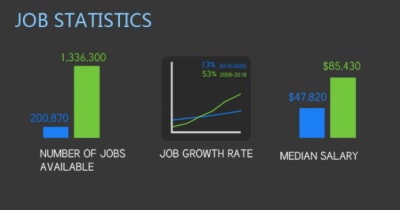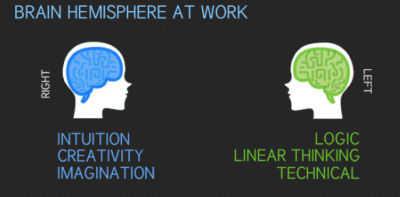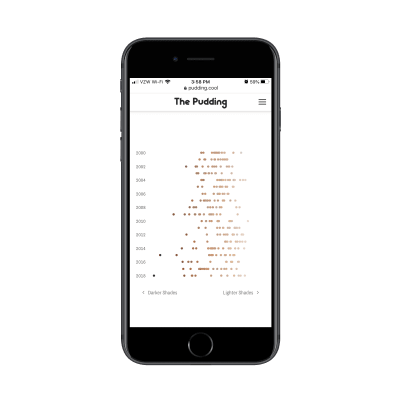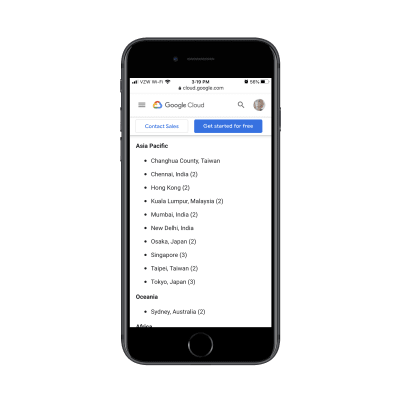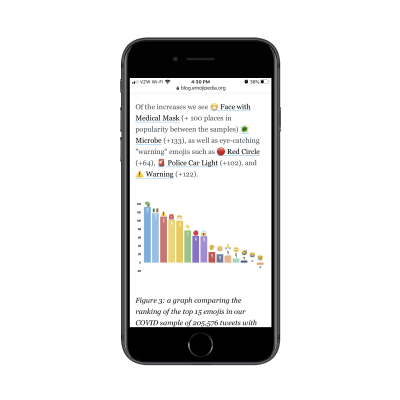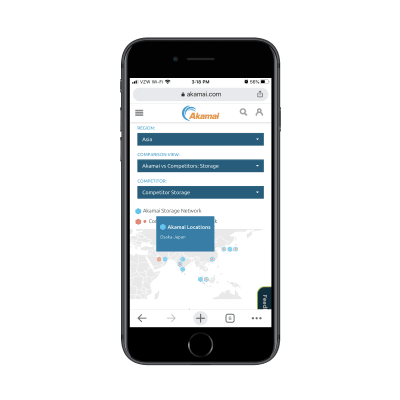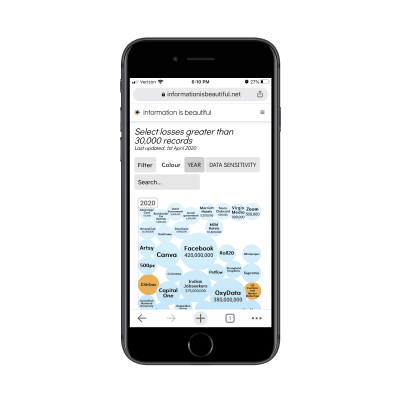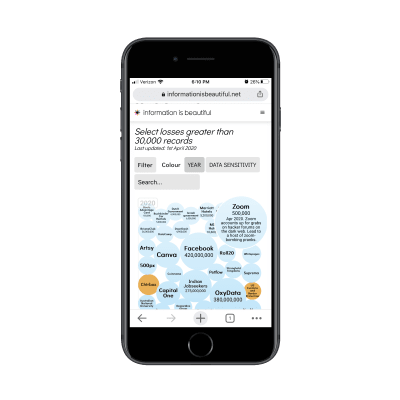In this episode of the Smashing Podcast, we’re talking about shaping our physical spaces when working from home. What can you do to take a step up from working at your kitchen table? I spoke to workspace geek Ben Frain to find out.
Show Notes
Weekly Update
Transcript
Drew McLellan: He is a web developer, author, and public speaker who specializes in CSS architecture, methodology, and training. Hailing from the UK, he currently works as a UI UX design technical lead at Bet365, but you might know him better from his books such as Responsive Web Design With HTML5 and CSS, and Enduring CSS, both from Packt publishing. He also writes for Smashing Magazine, and you may remember his series last year on building progressive web apps without a framework. We know he knows his way around the bottom web development landscape, but did you know he owns more trousers than socks? My Smashing friends, please welcome, Ben Frane. Hi Ben, how are you?
Ben Frain: I’m smashing, Drew.
Drew: I wanted to talk to you today about something slightly different from your usual specialism of CSS architecture. With social distancing measures in effect, many of us are finding ourselves needing to spend some serious time working from home. And in a quest to be productive, we might quickly find that our home workspaces aren’t necessarily the best equipped or configured to help us to work well and remain healthy. So, I wanted to talk to you a little bit about workspaces, and generally the things people might want to think about when they find themselves working from home. This is something of an interest of yours, isn’t it?
Ben: It is a little bit. I’m what you might describe as a mechanical keyboard aficionado, but I’m also tend to get myself quite obsessed about getting a physical workspace right. Obviously, a great, many of us, myself included, have been dumped in our home offices or whatever we deem to be our home offices for the foreseeable. And so, you’re continually making that trade off of trying to decide what do I invest in to make myself comfortable and get work done without wanting to spend thousands and thousands of pounds, dollars on stuff that potentially you’re not going to use for a long time. So, I think everybody or a lot of people are making these decisions about what stuff they can grab from somewhere else and what things it’s worth investing in to make things more comfortable. The old adage is always spend your money on your chair and not your desk, and I think things like that are good advice.
Drew: I mean, transitioning to working from home, I think many of us find ourselves working from a sofa or hunched over a laptop at the kitchen table. That’s not really the best way to work, is it?
Ben: No, it isn’t. I mean, I can remember the old house where I used to live, because I had a day job, like a lot of other people and then I’m writing books in the evening, and I can remember spending months at a time where I would put a bread board on my desk hub and my laptop on top of that, and that was my standing desk in the evenings, which actually wasn’t so bad because it did force me to be up right for decent portions of the day. I was looking at before the whole COVID thing came about, because I’d started to write another book in the evenings. I’d made the deal with myself that I would buy one of these electronically adjustable standing desks which I found great utility in. It was a lot of money at the time for a desk because … I mean, obviously, people decide what they want to spend the money on differently, but it always felt like a bit of an indulgence.
Ben: But having had it now, I think it’s worth every penny and I really enjoy the fact that I can sit for a bit and then stand for a bit, and there’s not … You can get the manual ones where you crank a handle like an old 1920s car to get the desk up and down. I went for the electronic one even though it’s quite a bit extra, but I’m glad I did because I’m lazy and I probably would never use that handle.
Drew: So, if we’re looking to move off our kitchen table and think about getting some sort of desk, sit stand is one thing to bear in mind, are there other considerations we should make with a desk?
Ben: Yeah, I mean, I think the actual sort of the desk top itself, you can get very inexpensively, even places like Ikea, which have obviously been thrashed with everybody trying to get hold of an inexpensive desk at the moment, but you can still get a slab of wood fairly inexpensively. I mean, chair is obviously the big one. I mean, I’m lucky in that touch wood, I’ve never had any problems with back or any of that thing that is typical of people that work at computers all day. But I think even things like a popular one that you see is like the Herman Miller Aeron, is one of the very popular maker chair, but really quite expensive. But you can pick them up around $300, something like that refurbished, which is probably when you’re trying to decide where to put your money to be comfortable for a whole day’s work, it perhaps isn’t as bad as it sounds. And then obviously the same, I know some people struggle with RSI, so I know a lot of colleagues of mine have got the vertical mice which is they’re relatively popular to prevent that, which again, more expensive than your typical mouse, but people don’t always consider the fact that.
Ben: I know trades people who work as builders and that they will think nothing of spending a few thousand pounds on a particular piece of kit. And yet often we will just use whatever comes stocked with a computer that we have and we’ll bulk at the idea of spending a hundred dollars on a mouse or $200 on a keyboard. And yet really we have a relatively low entry point in terms of cost in order to do what we do. I think we have a tendency to be a little bit perhaps cheapskate in that regard. But if you find yourself getting physical problems or you’re not as comfortable as you may be, it perhaps is worth thinking about those things before buying other things I guess.
Drew: I guess preventative expenditure on decent chair for example, will save you an awful lot when it comes to medical bills and physiotherapy or anything like that that is required to put the problem right.
Ben: Yeah. And I suppose it’s all conducive to you being good at what you do or being the best that you can at what you do. If your limitation is a kit that you use, and you can alleviate that limit, then it seems sensible to do so.
Drew: So if we’re thinking about spending money on our work environment, if we’re currently sat at the kitchen table on a wooden chair or whatever, you’d reckon a chair is the best place to start?
Ben: That would be my advice. Yeah. I mean, I can’t profess to be an authority on these things, but it seems it’s a sensible, it’s probably the single most important thing you could do to make yourself comfortable throughout the day. You can start with something fairly expensive. I made the same mistake and I ended up getting a 45 pound office chair from Amazon and I didn’t realize that it didn’t have a tilt forward, whatever the right word for that thing is, on the axis. So what I found is it was digging into the underside of my thighs, behind my knees and I was thinking, why are my legs going dead after 45 minutes of sitting in that thing? And you just don’t, I think particularly if you work for a company that provides decent office chairs, you just take them for granted and it isn’t until you look at that particular make and brand that you go, “Oh my God, this is a $700 chair.” When you realize that crikey, people have thought about this and done a lot for you and then obviously you come to your home environment and you think, “Why not spending X hundred dollars on a chair?” But maybe it is worth it. Particularly if you’re here for the long haul.
Drew: And we talk a lot as developers, don’t we? About this productivity consideration of being in the zone and being able to get in the flow of writing code or working on a thing and time just seems to pass by and you can be super productive. Well, one thing I’ve found that can pull you out of that zone quite quickly is needing to stop and stretch because your legs have gone dead or your back’s aching. That can really disrupt your productivity as well as the longer health implications of that.
Ben: I mean, what have you found true in your situation? What have you done? What have you found the most effective?
Drew: So at the moment during lockdown I am staying with my parents, so I’m on my mother’s desk, which has a filing cabinet on one end and a bookcase on the other. So it’s all a bit makeshift. But at home normally, I do just have a couple of the cheapest Ikea desks organized in an L shape. So I tend to work with a couple of computers, and I have one on one and one on the other and spin between them. I used to have a lower back complaint quite regularly in my twenties where I would be sat on my desk for long periods and occasionally every few months I would find I couldn’t get out of bed in the morning because something in my back had gone. And the thing that immediately helped with that was, as you were saying, the tip forward seat angle on a chair. So having a chair that did that immediately helped because I think it resolved my posture.
Drew: So that helped immediately, but longterm what has helped and what means I don’t have any back problems at all now is just improving my personal level of fitness and activity. And that just having a bit more core strength and being just a bit more fitter and a bit more active has meant that I can actually, I can sit in some fairly bad chairs and things for a while and survive it. Yes, very much immediately having a chair that would tilt forward just to bring my back up and get me into a good posture, that was a definite, definite improvement for my back immediately.
Ben: Yeah. I mean, that’s interesting because it’s another thing that I guess a lot of us are missing now is, I mean, I’m by no means a gym rat at all. I just go because I don’t want to die essentially. But things like good barbells with plate weights, I naively thought, well, I’ll just go to my local shop. I’ll be able to get some of those maybe a hundred pounds and then you realize that a decent barbell itself is $200 at least. But obviously stuff like that and keeping yourself in a decent physical shape whilst you’re a couch potato is quite important as well. So much to think about for the people that have not been working from home and all these things become apparent very quickly.
Drew: Definitely. And in terms of working from home, one of the things I find that I’m doing a lot lately is spending time in virtual meetings via Zoom or Skype or whatever. Are there any things, any considerations you’ve made in terms of making the environment better for being on calls?
Ben: I suppose. I mean, obviously putting your screen away from all your socks and pants, that’s probably quite important. I mean, I’ve found as well that perhaps try and be conscious of the fact that at first I was raising the desk because I’ve got this desk that will raise up and a couple of people said to me, it looks like you’re about to tell me off because I was looming over them because the … long story short, I suppose making sure that when you take calls, it’s quite nice to be looking directly into the webcam. I always tend to ask people if possible, if we can do a face to face call because I think one of the things we’re incredibly lucky in this situation about is that speaking on a video call now is so much better or even when you didn’t even have it 20 years ago. And being able to see this nuance in people’s expressions is so much more useful on a remote call than just hearing the voice. And so if you’re going to do that obviously, being able to look straight down the camera or so that they can see you not at some weird awkward angle and there’s some okay lighting in the room, I say this as I look at myself half and dark in this situation, but those sorts of things are worth thinking about I think.
Drew: One thing I’ve found has really helped with my setup is I’ve got a big LED panel light. It’s called an Elgato key light, which is on a big stand.
Ben: Oh, like a big uplighter sort of thing?
Drew: It clamps onto the desk and is on a big pole and then sits above the monitor and shines a blanket of light down on there.
Ben: Oh, that’s pretty good. So it’s more like a daylight kind of light I take it?
Drew: Well, yes. You can actually adjust the color temperature and the brightness of it from software on your desktop.
Ben: How can you tell a difference if you use that light? Does it feel better?
Drew: It makes a big difference. Yes, especially you get often with webcams. You get the situation where the background is more lit by the windows in the room than you are and the camera doesn’t expose for the right thing. So making sure that you as the subject and nice and bright in the frame really helps the camera to get good focus and therefore your facial features are clearer and you can communicate well that way.
Ben: These are like Hollywood techniques, truths. Incredible. I mean, does that help as well with things like glare on your screen because you get in a more even diffused light in the room? Or have you not noticed?
Drew: It’s not particularly lighting the screen. No.
Ben: Okay.
Drew: I mean, glare on the screen is a definite thing that we should really think about in terms of workspaces. Where I am here, I’ve got conservatory windows at the end of the rooms. There’s a lot of light flooding in there.
Ben: I was just going to say, just what you need.
Drew: First thing in the morning, it can be very, very difficult. I have my editor set on a dark theme usually. My code editor. And so then I often find that I’m not using the left hand side of my screen, which is slightly washed out by the windows and I move everything over to the right side.
Ben: And do you think that’s a subconscious thing? Just because I just can’t see it so I’ll concentrate my efforts elsewhere.
Drew: But actually probably what I should be doing is switching to the opposite color scheme in my editor. I should be switching to dark text on a light background perhaps during the day.
Ben: They’re not cool anymore though Drew. Or didn’t you get that memo?
Drew: It’s not cool, no. But neither is failing eyesight.
Ben: No, no, definitely not.
Drew: One of the sorts of things in people’s workspaces that perhaps they don’t think of so readily when you think about optimizing how you work is perhaps one of the most common input devices, which is the keyboard. You wrote recently for Smashing Magazine on the subject of mechanical keyboards, which are seeing something of a Renaissance, aren’t they?
Ben: Yes, that’s right. It is funny because I always say to people, I get… because in my circles, people that I know, people are aware of my minor obsession with these things. And so I get asked quite a lot about them. And over the months and months of this, I thought, it’s one of these sorts of areas, which is because it is quite niche you tend to end up on a particular forum for this topic and you very quickly feel like, “Oh my God, this is a level of geekery beyond something that I’m comfortable with.” And that comes from somebody who’s relatively geeky. But I think there’s definite merit in them in terms of, I would never say to somebody, this is something you absolutely need to make you better at what you do. It more falls into the camp of, because you can get a mechanical keyboard, which makes you feel productive and in some weird pseudo way that makes you more productive. So many of us take the keyboard that comes with our system.
Ben: I never think about it any more than that. And just off we go. But I was surprised once I started looking at all the plethora of different layouts that you can get because I just wasn’t aware of the fact you can get these tiny little 40% size ones, you can get 65% ones which do have the arrow keys and some of the others, but lose the function keys. And it was only when I really started to analyze what I did with a keyboard and the keys that I pressed that I realized there was whole areas of keyboard, which is taking up often a substantial portion of your free desk space where you might prefer to jot stuff down and all the rest of it. And I realized that this big desk commander that I was using with a dedicated number pad was just an indulgence really. And I thought I needed those keys and it turns out I actually didn’t.
Ben: So, aside from the physical considerations, there’s just a very nice, I mean, mechanical keyboards often, you put one in front of somebody who’s not seen one before and they just laugh and think that it’s something out of war games from the 1980s. But once you overcome the fact that it isn’t a sleek, minimal thing like that and you actually use it and you get a feel for the key travel and stuff, you actually realize that there’s a rhythm that you can get with them, which you can’t get with these very shallow chiclet keys that we’re used to on keyboards nowadays and often things like iMac and the light ship with these very, very slim keyboards with very minimal travel on the keys, which are fine but this is obviously, we’re talking about keyboards that are the other end of the scale.
Ben: So I always say to people, let’s be clear, this isn’t an exercise in good economics because they’re very expensive when you can go and get a 15 pound keyboard from your Tesco’s, Walmart, et cetera. But it is an investment in your own sort of, I mean, the joke I allude to in the Smashing Magazine article is the Rifleman’s Creed, which is a soldiers tool as it’s rifle. And for us more than anything else, it’s the keyboard. And so it’s finding something that particularly suits your needs and you enjoy using and you take care of and get the most out of as you can.
Drew: As you say, I think of mechanical keyboards a bit like using the keyboards that were on computers when I was growing up in the 1980s, A really retro style of technology. Hasn’t technology moved on, on the keyboards, that ship with modern computers just better than that old technology?
Ben: Well, I think the funny thing is, better is a subjective term. And so typically we have become accustomed to these very, taking the ones that ship with an iMac for example, which are incredible pieces of design, very slim, very elegant looking, but in terms of actual feedback to the user, the key travel that you get, I’ve just found it’s incomparable “proper keyboard”. And so once you kind of, if you eliminate, if you can embrace that aesthetic of the retro keyboard if you like and get over that and actually just use one for a little bit, I don’t know many people, well, I don’t know anybody that’s gone down that path and then backed back out and gone, “Actually I prefer the really shallow travel, I like the really cramped arrow key set up.” Because for what we do, whilst it’s lovely on a laptop because it lets you have a lovely sleek laptop that you can take different places, if you’re sat in front of a machine and you’re using that, and code is more than anyone else because we tend to have less reliance on the mouse.
Ben: Those keys are doing stuff for you. They’re working for you. So I don’t think you want a tiny little arrow key cluster. I don’t think you want a page up and page down doubled up on another key. These are the sorts of things that once you try and analyze how you work with your keyboard, it opens your eyes a little bit. So it’s a bit of an undoing of the aesthetic norm and the, what society tells you your keyboard should look at and how it actually works for you. I don’t know if that makes much sense?
Drew: Is it just for programmers that the mechanical keyboards are useful or do they have wider appeal than that?
Ben: Oh, I mean, the writers are the big proponents of them I suppose. I know for example, I think there was an anecdote of Terry Pratchett. He famously, once he found the keyboard that he liked, he bought 10 of them just because he never wanted to not have that keyboard because it was like you’re saying it’s about you don’t want that friction. You don’t want something to throw you out of your zone. It’s basically anybody who types on a keyboard for a long period of time rather than just casual use I think. Whether you’d go the route, if you’re somebody that’s jotting about to lots of different locations, you can get fairly compact mechanical keyboards as well that have got Bluetooth. I mean what keyboard do you use at the minute Drew? What’s your sort of-
Drew: Up until very recently, I’ve been using the iMac flat.
Ben: Yeah, the chiclet key one.
Drew: But after reading your article on Smashing and chatting to some colleagues at Netlify, a lot of them are very big mechanical keyboard nerds.
Ben: Oh, Okay.
Drew: I’ve decided to dip my toe in and I’ve got a mechanical keyboard on my main development machine. I’ve been using it about four weeks, I think about four weeks. And I’m finding that I’m very slow and making a lot of typos because it is so different from the very flat. I mean, the keyboard that I’m used to is basically like what comes with a laptop, just so flat, very low travel. And I’ve been using a keyboard of that style for maybe 10 years since Apple first started doing those as external keyboards. So then moving to something with much further travel and finding a keyboard with an angle to the keys is quite strange. I’ve had to prop it up quite a lot at the back to bring the keys forward to me a bit because I was finding that the whole angle was very strange and that has helped. But I’m finding I’m very slow, but I am getting faster and I am making fewer mistakes. I’m getting used to it. But I’m actually enjoying a lot of utility. The particular keyboard I’ve got has got a screenshot button.
Ben: Never knew you needed.
Drew: No, I know. There’s a key combination to activate during the screen capture, but this keyboard has got a button that does it. Actually, it’s something I do multiple times a day. In pull requests we tend to include a screenshot. This is what it looked like before, this is what it looked like after.
Ben: Right. Okay.
Drew: So it’s something I’m doing all the time. So having a dedicated key for it I found is actually incredibly useful and I’m feeling the benefit of that.
Ben: I think one of the other things that’s really good in some of the modern mechanical keyboards as well is they often have, they’re entirely re mappable so that you can put macros onto keys and you can, like for example, I have the shift key on mine set so that if I just tap it, it gives me a right bracket or parentheses and U S terminology, which in itself is quite useful for functions and all the rest of it. But if you’re using them and you want to skip along in normal mode through sentences, it’s that key that you do, which would normally be a hold on the shift and press the bracket key. So again, it’s about trying to analyze what you’re pressing day to day and thinking around that.
Drew: Mechanical keyboards in my experience tend to be a bit noisier.
Ben: They can be.
Drew: Is that a consideration? And if you’re working in a shared workspace, are all mechanical keyboards loud by definition?
Ben: No, they’re certainly not. And I think like all of us, when you first think of mechanical keyboards, if you have any idea of what they are, you think of these giant clicky clucky. When you’ve got the keyboard warrior that you’re speaking to on a screen share and you can barely hear the voice because all you can hear is this machine gun of keys. However, the main switch types or the clicky ones, which are the ones that we’re talking about there.
Ben: There’s then tactile switches, which give you the same travel, but you don’t get the physical and audible click as you push a key down. But then there’s also linear keys, which are just straight up and down, but you can also get silent variants of nearly all of them. If you are somebody who needs to sit in an office next to somebody, they’re probably the sort of one that you should go for. And then they’re no less, they’re physically just as nice to use I would say. I know that some people say they actually, the rhythm of the sound helps them to feel productive. Which I do understand that, but obviously if you’re working amongst other people, your productive might be somebody else’s disruptive.
Drew: What are the things that somebody should look for in terms of mechanical keyboard? I mean, it all starts with the keys, the bits you actually touch. And they can vary quite a lot.
Ben: Absolutely. So there’s the aesthetic side of it, which typically we developers and designers, we have opinions about what we like and every conceivable color and the way even that the legends are printed on the keys. You get some hot shots that just do away with the legends altogether and they just like some blind magician know which buttons to press. I’m not one of those. You also get people that can put the legends on the front side of the keys. And there’s also little things that for the longest time, looking at this keyboard, I’ve got on the J key and the F key, a little hump, which I assumed that was something to do with the manufacturing process.
Ben: But it turns out they’re homing keys so that you can rest your fingers on them and feel where you are on the keyboard. And then there’s also different sorts of plastic. There’s different angles to the keys themselves. I suppose if I was speaking to somebody who’d never had of mechanical keyboard before, although it sounds like a copout, I would probably just say, pick one you like the look of to begin with because the chances are you don’t really know what you like until you try it and try a few and sadly that’s where the cost of this obsession comes into play because you might find yourself going through three or four keyboards until you find one that you feel really suits not just the key switch type but the key cut material, the layout size, how customizable it is or isn’t. And a bit like the code editors, you have to be conscious of the fact that I could quite easily spend two days just messing around, setting my code editor up. Whereas really I should myself a big slap around the face and after a very limited amount of time, just get on with using it.
Ben: So it’s like all of these things you do have to be conscious of the fact that you can indulge yourself too much into these things. So I would say get one, use it. The primary concern that, as you alluded to before, should probably be whether you want a silent one or a clicky one to begin with because that’s the thing you can’t easily undo. A lot of them these days also have what’s called hot swap sockets, so that if you get yourself a keyboard and decide you actually hate the feel of these switches, you can pull them all out and put a different set of switches in, which is not necessarily cheap, but it’s a lot cheaper than getting a whole new keyboard. But the resale value in these things is typically very good anyway. So if you spend a couple hundred dollars on a keyboard, you probably get 150 back, even like six, eight months down the line if you needed to.
Drew: As you mentioned, there are all sorts of different types of switches that can exist under these keys. They’re called key caps, aren’t they on the top? Which is the bit that you actually touch. But then underneath those you’ve got different switches.
Ben: Yes.
Drew: I found personally that I had no way of being able to comprehend what switches I might want without being able to try them out. And of course at the moment in particular, it’s very difficult to try out anything. You can’t go into a store. I mean, even if you could find one. Is there any default switch you’d recommend for somebody if they didn’t know where to start?
Ben: Yeah, I think I would say that if the idea of a clicky one appeals, what you should be looking for, it is a slightly confusing thing. There’s basically colors which … so Cherry MX who were the original makers of the majority of keyboard switches that you get in mechanical keyboards, they designated MX Blue as the clicky switches. And what you get now is even though other companies are now making what’s called MX compatible switches, which is a different company creating the same style of switches, they follow on that coloring convention. So typically blue switches, whether it’s Kaihl or Cherry or somebody else, or your clicky sort, a brown will be tactile, what’s called a tactile switch, which is you get that same resistance at the top of the key press, but without the click sound.
Ben: If you like the idea of a key which doesn’t have any resistance and it just travels up and down in a linear fashion, a linear switch, you’d be looking for something which is called an MX Red or equivalent. And then something which is more silent, they’re typically designated as quiet switches or silent switches. There’s a whole different camp of keyboard switches by a company called Topre, which is based in Japan. But that’s probably something I would say not to worry about for now because they tend to be both more expensive, harder to come by and I would probably try and rule out by saying go for one of the easier to come by MX variants first.
Drew: I chose MX Brown for my first keyboard.
Ben: Yes, I think I did the same as well.
Drew: I’ve no idea whether I like them or not because the whole thing is so new. The one thing we need to keep in mind I guess is different layouts of keyboards. I mean, I work with MX and obviously lots of people got PCs and various other things. Is that something to bear in mind when choosing a keyboard?
Ben: It’s almost a non problem these days. It used to be that some of the manufacturers, Filco for example, which they’re a good manufacturer of mechanical keyboards, but they used to have problems with Mac compatibility. Which you could work around with software for the Mac. It was a tool that used to be called Key Remap or something like that. It’s now called Karabiner, it’s a freeware piece of software which gets around the problem, but it was just an extra little bit of faff that you had to do. But typically nowadays with either dip switches on the bat, which are little tiny physical switches or the keyboard will have their own way of pressing certain key combos to program where the super key is so if you’re on Lenox it’s super key or we have the Mac key or the Windows key and you can typically swap all those sorts of things around with no problem at all. So it’s really more a case of … I mean, the example I gave in the article was there was a freeway piece of software which lets you, you stick it on to record and it logs your key process, which obviously you need to be sure that you’re comfortable with that to begin with.
Ben: But you can leave that thing running and it will produce a heat map of which keys you press and how often you’ve pressed them and all the rest of it. And often you’ll find that your expectation doesn’t match with the actual data. And that can therefore influence whether you want a keyboard that’s got a big number pad. If you’re somebody that works with Excel all the time, you more than likely going to make use of that. But if not, you might find that actually you just don’t need that whole section of the keyboard and you can go for something more compact. Also, the other thing going back to comfort is ergonomic keyboards, which most of us at some point have seen somebody with one other Microsoft natural keyboards where you’ve got the slightly turned sets of keys for left and right hand.
Ben: In the mechanical world there’s a few different ergonomic keyboards. The big one being the Ergodox EZ which again we mentioned in the article, but that’s not only two separate keyboard panels, but it also lets you adjust the rake of the key panel as well. So you can very easily change exactly the shape of those key pads and where they are. So again, although they’re not cheap, if you’re somebody that suffers with RSI and the light doing a lot of keyboard work, it’s perhaps worth looking at one of those.
Drew: Now, when I was looking at mechanical keyboards, I discovered that there were lots and lots of options I could build that came pre-assembled, ready to go, just plug in an and off we go. But there were also lots that seemed to come essentially as kits or as just a board and you could buy just switches and you could buy just key caps and you assemble it all yourself. That sounds pretty daunting.
Ben: Yeah, I mean it is and I would certainly say if it’s your first mechanical keyboard, don’t go there. It’s too much to take on at once. If you do find yourself enjoying keyboards as it were, it’s a bit like a Lego or a Meccano set. I recently did the first keyboard build of my own, having had them for four or five years. And that involves soldiering the switches onto the board and all sorts, which is not a level of geekery that I would suggest for the casual use. Just get a keyboard and make use of it and see how you like it first. But because they are getting more and more popular, gaming in particular is where they’re really starting to find a market now because you’ve got gamers who are obsessed with the shortest possible input lag of them pressing the space bar or whatever they’re pressing to nuke somebody or whatever it is that kids these days do. I’m out of that loop now. But that’s where they’re gaining notoriety and popularity and you’re getting the big peripheral brands like Logitech getting involved and Corsair that now make mechanical keyboards. So you’re getting more and more of this stuff is more easily accessible and easy to get a hold of.
Drew: Moving on from keyboards slightly or I mean perhaps, maybe not. Earlier in the year, you had an accident didn’t you? And lost most your finger, is that right?
Ben: Yeah. So I’ll give you the short, your notes version of it because it’s quite a story. I was essentially, it was early February and it was one of the first days in the UK, we had snow that year. And as is typical in the UK, if a snowflake falls, the entire infrastructure grinds to a halt. And so we were stuck in traffic having come back from the gym at lunch, it was five of us in the car. And we said, well, we’ve got a meeting at three o’clock and it was like five to three, we weren’t far from the office. Let’s just take a shortcut through this bit of land, which we’ve done many times before and we’ll get back to the office. And as we went through the other lads went one way. Three of them went one way and I carried on the way that I already knew and got to a bit and a new fence had been installed, but it wasn’t a sketchy walking fence, it was an every day, brand new, no sharp, edgy bits, nothing like that. Lots of footholds. It was maybe six foot tall, this sort of fence is an average person.
Ben: You’ve probably been over a hundred times before and would’ve thought nothing of it. So I climbed at one side, hung on the other and then I was maybe three or four inches from the floor and dropped off. I felt a bit of a weird twang in my hand, so I wondered, “Oh, I caught my wedding ring there on the fence, I wonder if I put a mark on it?” Glanced down and there was very little of my finger left. So it turned out that on the side of the fence I couldn’t see there was, where the crosses terminate, I had caught my wedding ring on it and it essentially yeah, removed the biggest part on my finger. And so very, very bizarre set of circumstances as it was then trying not bleed everywhere. At the same time find the other part of my finger and hopefully could stick it back on. In my naivety, I thought, “Well, as long as I can find the finger, this is easy these days, they’ll just few stitches, I’ll be back in the game.” But it turns out when you do it’s called a ring avulsion. And I don’t know, it’s actually quite common.
Ben: They told me up at the hospital that I went to that they get at least one a weekend, which I was crikey, I really would’ve liked to receive that memo. I perhaps would have thought twice about wearing a wedding ring. But because it’s sort of, without being too grim about it because it’s torn away from your hand, the ligaments get pulled from down in the palm of your hand as well. So it’s almost impossible for them to put it back. So long story short, it’s by no means fixed now, but it’s on the way. It’s probably going to be 12 months until it feels, I wouldn’t say painful. It’s uncomfortable more than anything. And obviously getting used to the fact every day you wake up in the morning and like look and “Oh my God.” Mentally, it’s quite a hard adjustment to make. But very quickly I was able to use the keyboard. But it’s funny because your mind still thinks you’re at the end of your finger as where it used to be.
Ben: And so you’re missing a lot of keys as you type and you have to make that adjustment that Oh, actually that finger’s not there anymore. So these particular key combos that I’m used to doing and have been ingrained in my mind for years and years and years, you have to unpick and redo. But I guess the human mind has an incredible capacity to work around these problems. And I don’t feel now even just … so that was 10th of February. Here we are beginning of May, I don’t feel now like it’s a hindrance, particularly on the keyboard. Things like lifting waits or rowing or something like that, you can certainly still tell a difference. And I think it’ll take a while for my hand to get stronger again.
Drew: Were there any adaptations that you needed to make other than the mental adaptations when it comes to typing? Is there anything else about your workspace or anything that you’ve noticed you needed to change?
Ben: I don’t think there has been really, I mean, in an odd way I’ve been very lucky because that particular finger is probably the weakest finger that you have anyway. And it’s on for me, my nondominant hand. I didn’t realize at the time, but apparently your little finger is 40% of your lifting ability. It comes from your little finger. So they said, “If you’d had lost your little finger, it would have been far greater implications.” And obviously your thumb is a really big deal. So in a weird way they said, “If you were going to lose a finger, that’s the one to go for.” Great. But the funny thing is in terms of actually your typing speed or whatever, your brain almost didn’t have to consciously do anything at all. It just remapped over maybe three or four weeks. I was away from work for two weeks, but I still had a book to finish. And so I was using that as my practice. Trying to get back up to speed as soon as I could. But yeah, a very bizarre set of circumstances. You always arrogantly assume these kinds of things out into other people and then one day it happens to you.
Drew: Exactly. Yeah, I think so many people who note the fact that they are suddenly needing to benefit from what we consider to be accessibility features of the work that we do. It’s not because they’ve had an incredibly traumatic life changing incident or there’s not that they were born in a particular way, but just something smaller, a minor break of an arm or a losing a finger or any of these things. Failing eyesight can just bring home the need that actually, accessibility is something that we all rely on even just as we age.
Ben: Yeah, absolutely. I mean, it’s funny because I’ve always been mindful of accessibility for sure. But I don’t think I was perhaps as acutely aware as you say of just the fact that you can become that same situation yourself like you say, it’s my own arrogance that you think you can go on forever feeling just fine. But yeah, I suppose it’s not a bad thing to get a slap in the face from time to time and makes you reappraise things.
Drew: Definitely. Yeah. So I’ve been learning all about optimizing my workspace. What have you been learning about lately?
Ben: Well I’ve got a book that I wrote the first edition of in 2012, the one that you mentioned at the start of the show. And the publishers hassled me every three or four years to do it. Another version of it, which I always grumble and roll my eyes about and I think this is done, like there’s nothing new to add here. But it turns out things move on quite a lot. And I think the majority of my time at the minute has been, I’ve learned a hell of a lot about CSS Grid, which I know Rachel of this parish is a big proponent and has been heavily involved in. And I think the sort of thing that I’ve said to people is that it’s probably, getting a good handle on CSS Grid is probably the biggest upgrade to your CSS skills you can do if you don’t already know Grid. That’s been fantastic.
Ben: And then for the last sort of, I started out like a lot of people my age, I didn’t go into web development as an intention. I find myself there. And so for the longest time I stayed away from what we’d call real programming languages, and it’s only in the last two or three years that I’ve got into JavaScript and TypeScript and so classes and things like that in JavaScript, which I’ve just tried to steer away from the longest time. That’s the stuff I’ve been looking at and trying to really wrap my head around destructuring and all this stuff. There’s no end in sight for learning in web dev world, that’s for sure.
Drew: That is definitely for sure. If you, dear listener, would like to hear more from Ben, you can follow him on Twitter where he’s at. Ben Frane, and find his personal website at benfrane.com. Thanks for joining us today. Ben, do you have any parting words?
Ben: No, just if you wear a wedding ring, maybe think about perhaps not.











